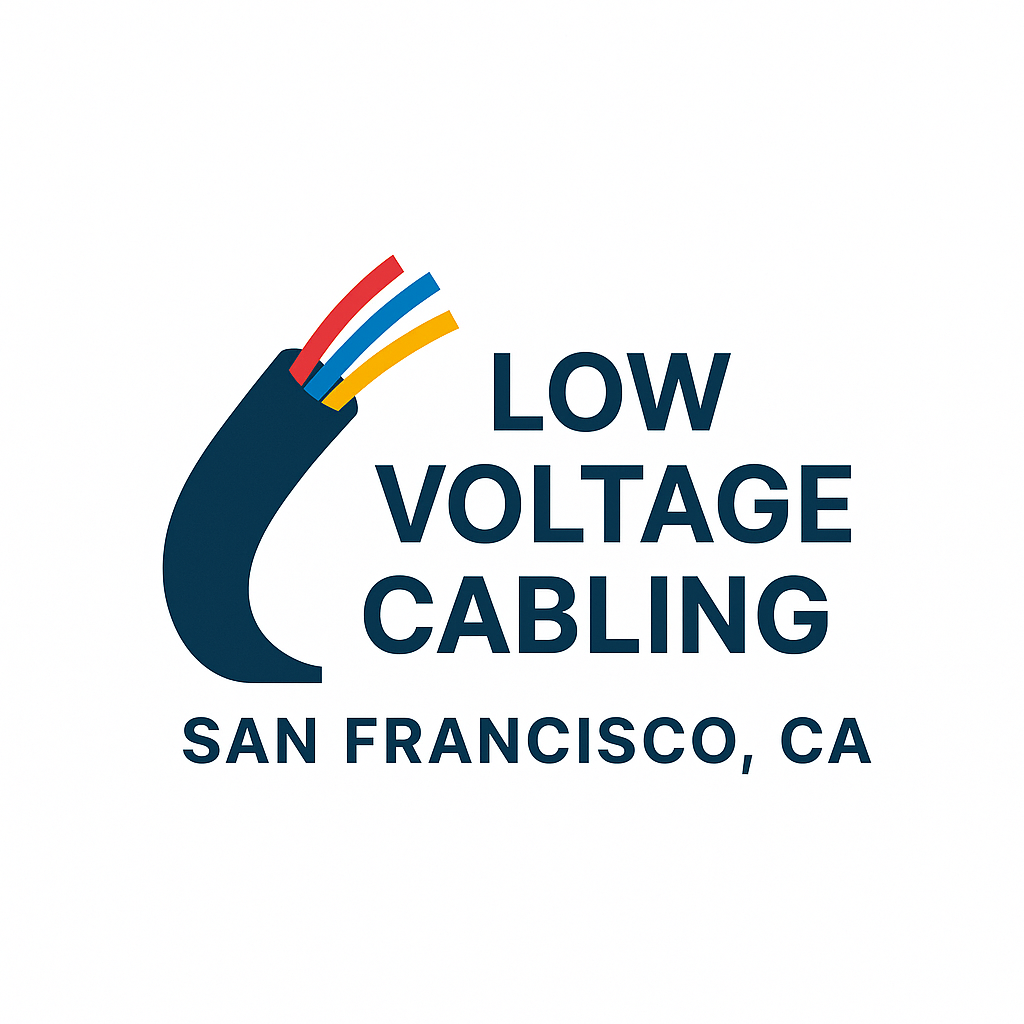Low Voltage Cable Repair in San Francisco, CA: Expert Guide to Diagnosis, Techniques & Best Practices
What Is Low Voltage Cabling?
Low voltage cabling refers to electrical wiring that carries 50 volts or less. These systems typically handle communications, audio-visual setups, data networks, security cameras, intercoms, and building automation. Unlike high-voltage electrical wiring, low voltage cabling focuses on signal integrity rather than power delivery.
In San Francisco, low voltage networks are commonly used in both residential and commercial environments to support structured cabling systems, fiber optics, Ethernet connections, and access control infrastructure.
Why Low Voltage Cable Repair Is Important
Faulty low voltage cables can cause signal loss, poor network performance, and security system failures. Businesses rely on dependable connections to maintain operations, while homeowners depend on stable connections for smart home devices, alarms, and entertainment systems.
Repairing damaged cables ensures:
- Stable data transmission
- Reduced downtime
- Increased equipment lifespan
- Cost savings compared to full system replacement
In a tech-driven city like San Francisco, timely cable repair can make the difference between smooth productivity and costly disruption.
Common Causes of Cable Damage
Even high-quality low voltage cables degrade over time. Some of the most common causes include:
- Physical damage: Construction activity, rodent interference, or improper installation.
- Moisture and corrosion: Especially in older buildings or outdoor installations exposed to the Bay Area’s coastal humidity.
- Overheating and power surges: Fluctuating currents or faulty connections.
- Wear and tear: Natural aging of insulation materials.
- Poor cabling design: Using incorrect cable types or routing cables too close to electrical lines.
Understanding the root cause of the problem helps technicians perform accurate, long-lasting repairs.
Signs You Need Cable Repair
Low voltage cable issues often show subtle warning signs before system failure occurs. Common indicators include:
- Unstable Wi-Fi or Ethernet connections
- Security cameras losing signal intermittently
- Poor sound or video quality in AV systems
- Intermittent power to devices
- Flickering or offline smart home systems
- Burnt or damaged cable ends
If these problems appear, it’s essential to contact a qualified technician before the issue escalates.
Step-by-Step Repair Process
Professional cable repair follows a systematic process designed for accuracy and safety. A typical repair service includes:
- Initial Inspection: Visual assessment to identify physical damage.
- Testing and Diagnostics: Using tools such as cable testers or time-domain reflectometers (TDR) to pinpoint breaks or shorts.
- Isolation of Faulty Sections: Determining the exact segment that needs repair.
- Cable Splicing or Replacement: Damaged sections are cut and reconnected with compatible materials.
- Insulation and Shielding: Proper sealing and grounding prevent interference or further damage.
- Performance Testing: Ensures the repaired cable meets system specifications.
- Documentation: Technicians often record the repair details for future maintenance.
This standardized process ensures compliance with industry standards such as TIA/EIA and NEC low voltage codes.
Tools and Techniques Used
Low voltage cable repair requires precision instruments and skilled handling. Common tools include:
- Cable testers and certifiers
- Crimping and stripping tools
- Punch-down tools for structured cabling
- Fiber optic fusion splicers
- Network analyzers and multimeters
- Heat shrink tubing and weatherproof seals
Advanced diagnostic tools help identify hidden faults behind walls or within conduits, reducing invasive work and ensuring efficient service.
Benefits of Hiring Professionals
DIY repairs can sometimes worsen cable damage, especially when insulation or shielding is improperly handled. Hiring certified low voltage technicians offers several advantages:
- Accurate problem detection: Professionals use advanced diagnostic equipment.
- Code compliance: Ensures repairs meet San Francisco’s building and electrical codes.
- Improved system longevity: Quality repairs prevent recurring faults.
- Time efficiency: Trained technicians minimize system downtime.
- Safety assurance: Proper insulation and grounding prevent electrical hazards.
Professional services guarantee that every repair aligns with both safety regulations and system performance requirements.
Safety Standards and Local Regulations
In San Francisco, low voltage cabling and repair work must adhere to specific regulations outlined by the California Electrical Code (CEC) and National Electrical Code (NEC). Technicians performing these services are typically required to hold certifications or work under licensed electrical contractors.
Common regulatory considerations include:
- Proper labeling of low voltage circuits
- Maintaining separation between power and communication cables
- Use of flame-retardant and UL-rated cables
- Compliance with seismic safety standards for cabling support systems
Adherence to these codes not only ensures safety but also protects property owners from legal and insurance issues.
Maintenance Tips to Prevent Future Issues
Regular maintenance helps prevent costly repairs. Here are best practices for long-term cable reliability:
- Schedule annual inspections for large systems
- Avoid over-bending or crimping cables
- Keep cables dry and away from heat sources
- Use protective conduits for outdoor installations
- Label cables for easier troubleshooting
- Replace worn connectors and patch cords promptly
Preventive care ensures uninterrupted connectivity and extends the lifespan of the entire system.
Conclusion and Key Takeaways
Low voltage cable repair in San Francisco, CA is essential for maintaining the city’s connected lifestyle—whether in modern offices or smart homes. By addressing issues early and relying on certified professionals, property owners can restore network stability, protect investments, and ensure long-term system efficiency.
Key Takeaways:
- Low voltage systems power communications, security, and automation.
- Damaged cables cause signal loss, downtime, and safety hazards.
- Professional repair ensures compliance, reliability, and performance.
- Regular maintenance prevents future cable failures.
